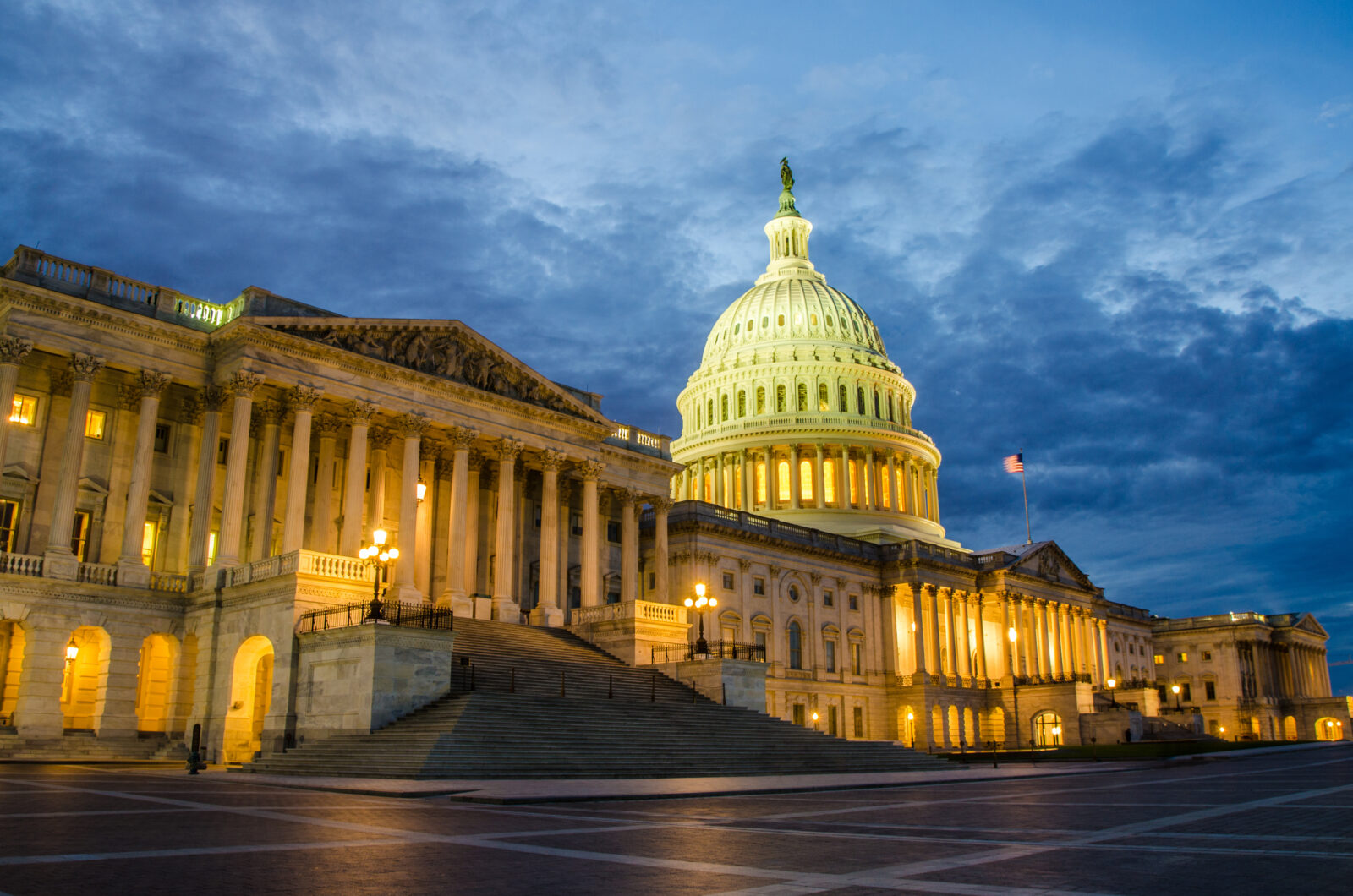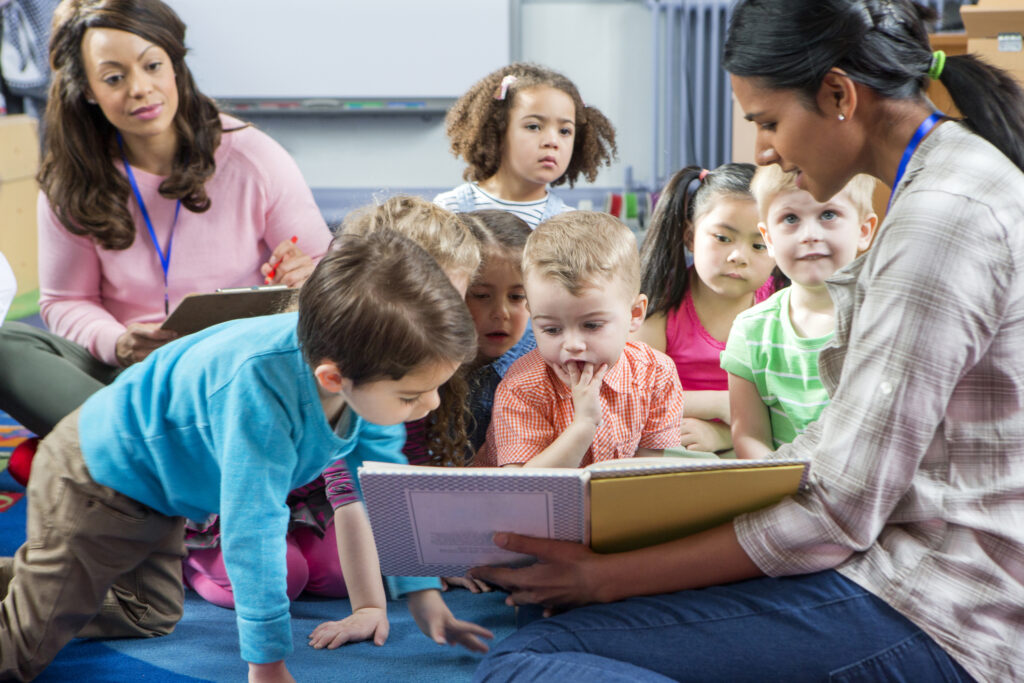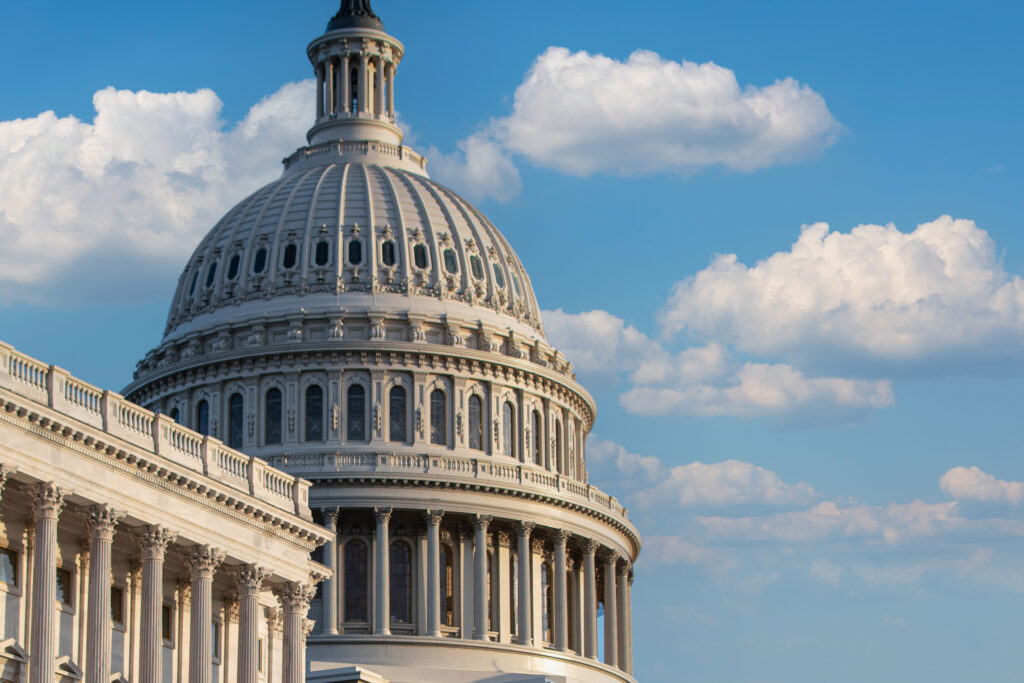STATE OF PLAY: Federal Shutdown and Child Care/Early Learning Programs

UPDATE: 11/18/25
In the aftermath of the shutdown, Head Start programs around the nation are continuing to re-open, some more quickly than others. See the latest on the FFYF Shutdown Impact page.
UPDATE: 11/12/25
On November 12, Congress ended the federal shutdown after 43 days by passing a Continuing Resolution to fund the government through January 30.
What We’re Watching
In the days ahead, the Senate will reportedly consider a handful of Appropriations bills, including the Labor-HHS-Education bill proposed in July. That bill included increased funding for both the Child Care and Development Block Grant and for Head Start (details here). A full spending bill must be passed before January 30 in order to keep the government from shutting down again.
What’s Next
FFYF is urging Congress to act quickly to provide increased stability for families, children, and programs by passing a full-year spending bill that prioritizes funding for child care and early learning programs through Fiscal Year 2026.
Tell your Member of Congress to pass the FY26 Labor-HHS-Education bill to ensure full-year funding for the programs that support child care and early learning for families around the country.
Keep up to speed on what happens next with FY26 funding by bookmarking the FFYF State Of Play: Appropriations.
UPDATE: 11/10/25
What’s New: Last night (Sunday, November 9) the Senate took a step forward in ending the longest government shutdown in United States history. The 60-40 vote paves the way to fund most federal agencies through January.
What’s Next: Last night’s vote will allow the Senate to formally debate the measure and hold a final vote. It must be approved by both houses of Congress then signed by President Trump to end the shutdown. This could happen as soon as later this week.
What’s Needed: As Congress continues the work of reopening the government, it is important for them to do the following on behalf of young children and their families:
- Continue the path forward to re-open the government, allowing Congress to return to regular order.
- Swiftly restore lost funding to Head Start programs so they can reopen and return to the work of caring for children.
- Provide stability for families by coming to agreement on a spending package ahead of the new January deadline, funding child care and early learning programs through FY2026.
UPDATE: Day 38 of the Federal Shutdown
11/7/25
As the shutdown continues, Head Start programs in 40+ states did not receive their scheduled funding on November 1st.
Head Start sites in states across the country have had to close their doors. This leaves thousands of children and families without access to the care, early learning, nutrition, and stability Head Start provides. Check out this page for the latest closure data as the shutdown continues.
In addition to those which have closed, many Head Start programs are only able to remain open by making serious concessions. Some have been forced to eliminate transportation and services, while others have had to cut back on staff or shorten operating hours. Still others have had to take out loans or open private lines of credit, raising concerns about paying interest rates and taking on associated risks if their full funding is not issued quickly once the government reopens.
We continue to urge Congress to protect Head Start by ending the shutdown. We also urge them to commit to swiftly reimbursing Head Start programs with their missed funding, ensuring they can quickly get back to the work of caring for children and supporting families.
Here you’ll find news clips from around the country tracking the impact the shutdown is having on Head Start services. We will continue to monitor the situation around the nation in the days ahead.
UPDATE
10/27/25
What We’re Watching: National Day Of Action
The child care and early learning community is uniting around a Day of Action on Wednesday, October 29.
If Congress does not act by the end of this week, Head Start programs across the country will start missing their November funding. Many will be forced to close their doors. And tens of thousands of young children could lose access to the care, early learning, nutrition, and stability Head Start provides.
Groups are joining together to urge Congress to protect Head Start by ending the shutdown.
👉 Here’s how to get involved. On Wednesday, October 29:
- Activate Your Network with easy rip and read language
- Post on social media using #EndTheShutdown and #StandForHeadStart
- Take a couple of minutes to contact your Members of Congress
- Learn more about what’s at stake and stay up to date
UPDATE
Updated: 10/23/25
Shutdown 2025: Impact on Head Start Programs
FFYF has two new resources that show the impact the shutdown is having on Head Start programs across the nation.
MAP AND STATE CHARTS
Federal funding for Head Start programs is dispersed on a staggered grant cycle, meaning different programs receive their funding at different times throughout the year. During a shutdown, this funding is not dispersed, putting many Head Start programs in immediate jeopardy of closing their doors.
FFYF has a new resource showing what this means at the state level, with Head Start programs located in 3 states not receiving their operational funding andmore scheduled to miss their funding if the shutdown persists through November 1st. In total, by November 1st, Head Start programs across 40+ states and Puerto Rico will have not received their funding, with a potential impact on Nearly 60,000 children.
NEWS COVERAGE
FFYF is also tracking local, state, and national news coverage concerning the impact the shutdown is having on Head Start programs around the nation. This list is updated daily at this link; below is a short list of examples.
- National: Associated Press Government shutdown imperils dozens of Head Start preschool programs
- National: NBC News Head Start programs flash red lights ahead of November funding cliff
- Arkansas: NBC4 UAMS to temporarily close locations for early childhood education program, cites lack of federal funding caused by shutdown
- California: Mendocino Voice Head Start programs in Mendocino, Lake counties to remain open during shutdown
- Colorado: ABC7 Federal shutdown threatens Colorado early child care centers, putting 1,300 kids and their families at risk
- Florida: WCTV Head Start programs in Tallahassee face uncertainty as government shutdown continues
- Georgia: Axios Atlanta Federal shutdown in Georgia: housing, food stamps and public health affected
- Indiana: WANE Federal government shutdown puts Head Start programs at risk
- Iowa: SW Iowa News Record-long govt shutdown threatens food, early childhood education assistance
- Minnesota: MinnPost The shutdown threatened to close dozens of Head Start centers. Then the state stepped in.
- Missouri: KCUR Thousands of Kansas City kids could lose Head Start programs if government shutdown drags on
- North Carolina: ABC11 Early Head Start program in Durham at risk as government shutdown continues: ‘We need it to end’
- Ohio: Times-Gazette Shutdown puts local Head Start program at risk
- Oklahoma: Oklahoma Voices Oklahoma Head Start centers face ‘dire’ funding loss from government shutdown
- Oregon: The Oregonian Government shutdown puts Oregon preschool programs in jeopardy
- Pennsylvania: ABC16 Local Head Start programs concerned about funding amid state budget impasse, government shutdown
- West Virginia: WV News Shutdown threatens Head Start programs, national association warns
UPDATE
10/17/25
STATUS
Concerning deadline approaching. Time for action.
WHAT WE’RE WATCHING
As stated earlier, the longer the federal shutdown lasts, the worse the consequences will become. The early learning community is very concerned about an upcoming November 1st deadline.
If Congress fails to act to end the shutdown before November 1st, tens of thousands of children could lose access to Head Start along with the care, education, nutrition, and stability it provides.
Specifically:
- 135 Head Start programs will not receive their operational funding on November 1 if the shutdown persists. Six others have already missed their payments from October.
- These programs operate across 41 states and Puerto Rico and serve more than 65,000 young children with valuable care, early learning, nutrition, health screenings, and other important services.
- With Head Start funding in jeopardy, programs are at risk of closure and thousands of families will face increased financial hardship and the stress of not having stable care for their children.
WHAT WE’RE DOING
It’s time for action. Tell your Members of Congress that the shutdown is making life harder for thousands of families with young children. Protect Head Start. End the shutdown today.
And please, spread the word. Encourage your networks, partners, allies, family and friends to contact Congress and make their voices heard.
UPDATE – Shutdown, Week 3
Posted: 10/14
Status Update
Escalating uncertainty and concern.
What We’re Watching
- Layoffs: On Friday, the Administration announced thousands of layoffs across seven federal agencies. While concerning, it is not yet clear what impact these layoffs will have on child care and early learning services in the short term or further into the future.
- The layoffs included inside the Department of Education, where nearly all staff in the Office of Special Education and Rehabilitative Services (which oversees IDEA, funding that provides early intervention, special education, and related services to more than 7.5 million eligible children).
- The layoffs also included an estimated 1,100+ layoffs at the Department of Health and Human Services, many of which were at the Centers for Disease Control which have already been reversed. It is not clear if any of these firings have a direct impact on child care and early learning.
- Big Picture Concerns: Hill Watchers are raising alarms that this shutdown may be chipping away at Congress’s constitutional powers, leading to a shift in checks and balances in Washington. Many are watching closely for signs of a return to regular order, worried this shutdown could seriously weaken Congress’s ability to legislate and steer how the country spends its money in the long term.
- Child Care and Early Learning: The longer the shutdown lasts, the more likely it is to have an impact on child care and early learning programs. More than 100 Head Start programs are scheduled to receive grants on November 1. If the shutdown continues and these grants cannot go out, this could impact tens of thousands of young children and families who rely on Head Start services.
UPDATE – Shutdown, Week 2
Posted: 10/9/25
Status Update
Watchful, with increasing concern.
What We’re Watching
In Week 2 of the Federal Shutdown, Hill watchers are keeping an eye on three things in the coming days.
- Increased financial pressure is on the horizon for many families. On Friday 10/10, government employees will miss their first paychecks; members of the military will face missing paychecks starting Wednesday 10/15.
- As we knew, only a handful of Head Start programs were scheduled to receive their funding grants on October 1st, meaning most services were able to continue in the short term. More than 100, however, are scheduled to receive grants on November 1. If the shutdown continues and these grants cannot go out, this could impact tens of thousands of young children and families who rely on Head Start services.
- Other programs with a direct impact on young children – Child Care and Development Block grants, IDEA services for children with disabilities, and CACFP nutrition assistance – continue to have some buffer within their funding streams and we are unlikely to see a widespread disruption in services in the short term. That said, the longer a shutdown continues, the more likely it is they could see an impact.
The 2025 Shutdown
Posted 10/1/25
The federal government shut down last night, with Congress unable to come to agreement over either the FY26 appropriations funding bill or a Continuing Resolution. While there are many unknowns and impacts across multiple federal agencies, here’s what we know about the impact this could have specifically on funding for child care and early learning programs:
STATUS OF THE DAY
Child care and early learning programs: In the immediate future, there is cause for watchful concern but not for panic.
See BELOW for more detail, but in a nutshell:
Child Care and Development Block Grants: States have multiple streams of funding and flexibility in timing for spending funds. In a short shutdown, services are unlikely to be disrupted on a wide scale.
Head Start: Having learned from years past, very few Head Start grantees receive funding on October 1st. As a result, most services are unlikely to be affected immediately. That said, the longer a shutdown continues, the more likely it is that Head Start programs could see a disruption.
KNOW THE CONTEXT
The Constitution grants Congress the “power of the purse,” meaning it has the exclusive authority to set and spend funding for the U.S. Government.
There are two types of funding at the federal level: Mandatory and Discretionary.
- Mandatory spending – which accounts for roughly two-thirds of government spending – is set by law and operates on “autopilot,” meaning it does not need to be re-approved each year. It includes Social Security, Medicare, Medicaid, and various other programs.
- Discretionary spending, on the other hand, must be set each year through the Appropriations process. It includes most other spending, covering defense, transportation, infrastructure, salaries for federal employees, education, health, and funding for child care and early learning programs.
Each year, Congress sets the funding levels for all federal defense and non-defense discretionary programs for the following federal Fiscal Year (FY), which runs from October 1 through September 30 of the following calendar year. When it does not, one of two things will happen.
- First, it can pass a Continuing Resolution (CR), a temporary spending bill that continues appropriations at the same level as the prior FY for a set number of days, allowing more time to pass an appropriations spending bill.
- Or, second, the government “shuts down”, halting payments for federal defense and non-defense discretionary programs, delaying services, and furloughing hundreds of thousands of “non essential” federal employees until a CR or appropriations bill is passed.
IMPACT ON CHILD CARE/EARLY LEARNING PROGRAMS
A shutdown always has an impact on many government agencies and programs; it also causes additional chaos and uncertainty, both for the national mood and for the economy. Here is what it means specifically for the two largest child care and early learning programs:
Child Care and Development Block Grant (CCDBG)
CCDBG is the largest source of funding for child care, providing states with flexible funding used to help low income families with the cost of child care.
State funding for child care is received through the Child Care and Development Fund (CCDF), which combines two streams of funding: discretionary CCDBG funds – awarded annually – and mandatory funds under the Social Security Act. States have 2 years to “obligate” CCDBG funds (or show how they plan to spend it) and an additional 1 year to “liquidate” the funding (or spend it down). This gives states flexibility and, in a short shutdown, services are unlikely to be disrupted on a wide scale (assuming payment systems continue to work as they should).
Head Start
Head Start provides early learning and care, nutrition, health screenings, and other support services to young children from the lowest income families.
Head Start funds are provided to grantees annually, with grants awarded throughout the year on the 1st of each month. (With the government currently operating on a Continuing Resolution, however, Head Start programs are being awarded funds quarterly.) Very few Head Start programs are October 1st grantees; as a result, most services are unlikely to be affected immediately (assuming payment systems continue to work as they should). That said, the longer a shutdown continues, the more likely it is that Head Start programs could see a disruption.
As A Reminder
Before the shutdown, both the House and Senate passed Appropriations bills with funding proposals for child care and early learning programs, with level funding in the House and a slight funding bump in the Senate.
WHAT WE’RE WATCHING
Hill watchers are keeping an eye on three things in the coming days.
- How long the shutdown lasts. The longer a shutdown lasts, the bigger the disruption on programs and agencies. Programs with unspent funds may not see an initial impact but could begin to see one if a shutdown stretches out. For context, the longest shutdown in U.S. history was a 34-day partial shutdown from December 2018 to January 2019.
- How agencies respond. The Administration has a fair amount of discretion in determining how broadly a shutdown affects employees and services. Each agency determines which employees are furloughed (or put on leave) as well as which services are essential (and must continue), and which are not (and must be halted). This varies from agency to agency and from shutdown to shutdown. (Note: Members of Congress also make that determination for their own office staff.)
- Managing the unknown. There’s no shortage of theories on what happens next, but the simple truth is that no one really knows how this will all play out. With child care specifically, Hill watchers are keeping an eye on whether payments systems continue to operate as they should, the impact furloughed workers will have on services, and the impact other facets of the shutdown could have on families also served by CCDBG and Head Start.
LEARN MORE
- Brookings: What is discretionary spending in the federal budget?
- PBS News – “What closes during a government shutdown? What we know about how it would unfold”
- CBS News – The federal government is heading toward a shutdown. Here’s what economists say would be the impact.
- New York Times – Which Federal Benefits and Services Continue During a Government Shutdown?
Subscribe to FFYF First Look
Every morning, FFYF reports on the latest child care & early learning news from across the country. Subscribe and take 5 minutes to know what's happening in early childhood education.



